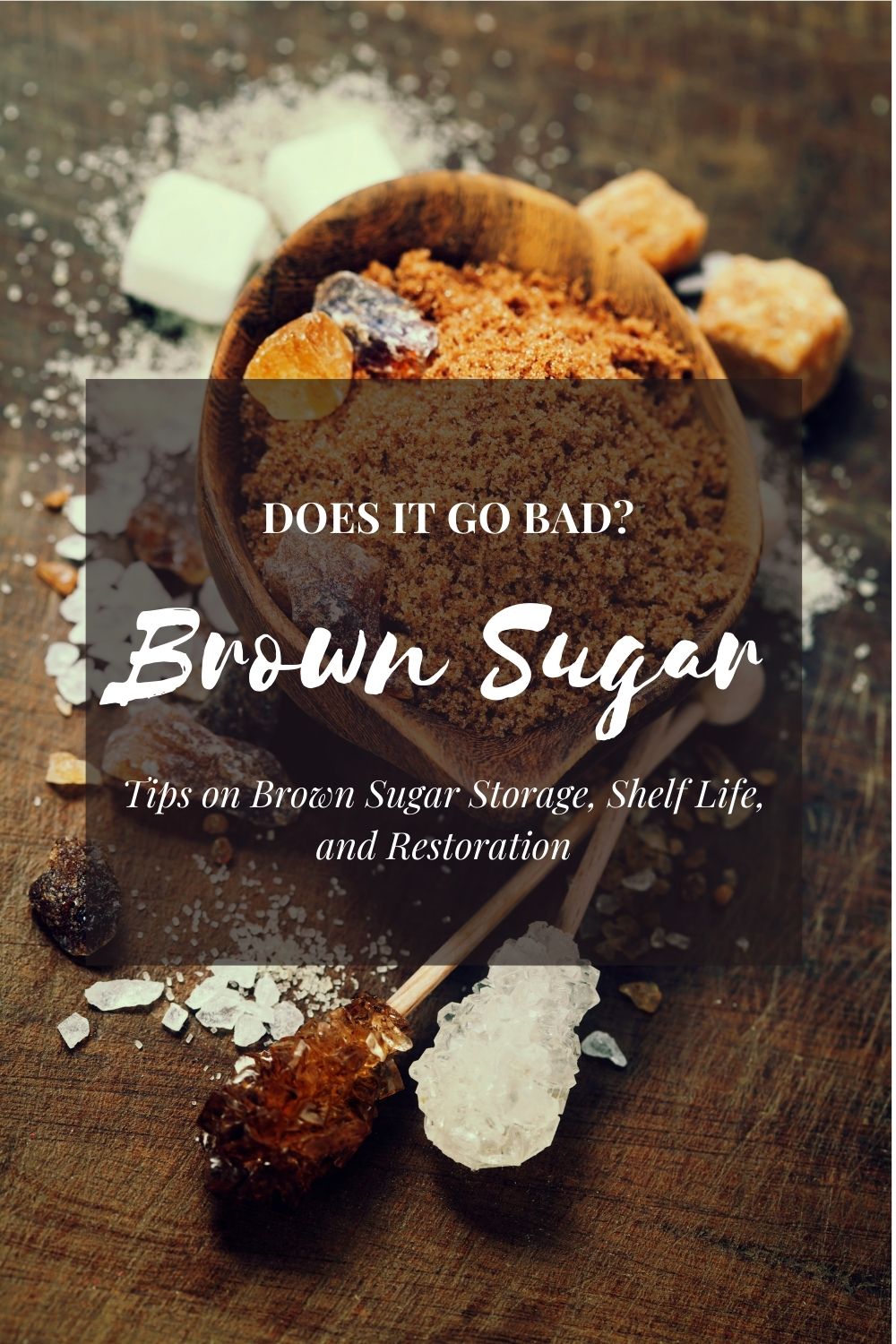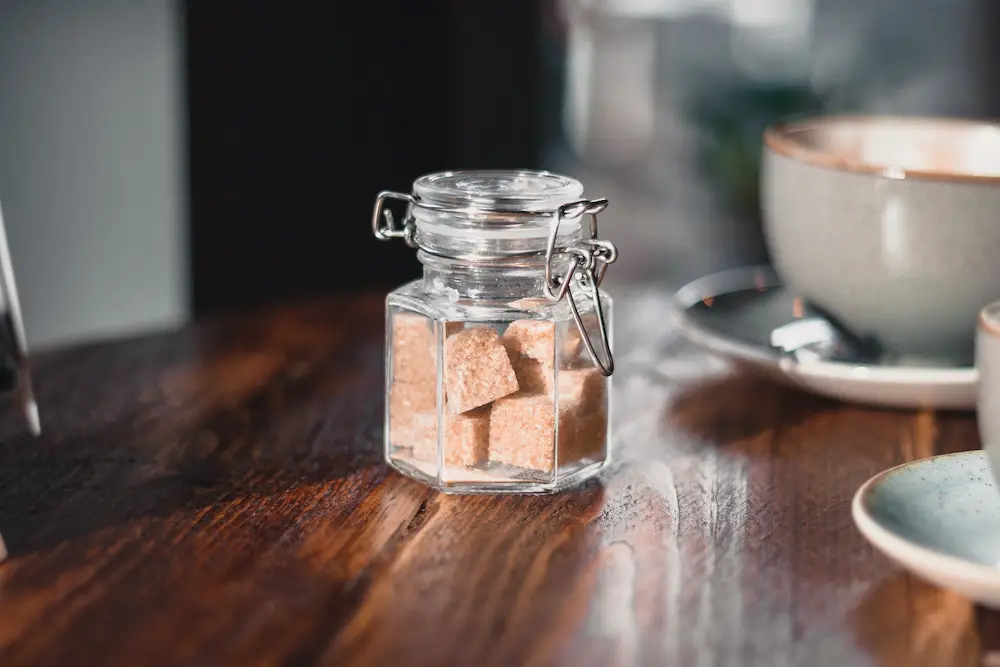Does Brown Sugar Go Bad? Tips on Storage, Shelf Life, and Restoration
Does brown sugar go bad? No, as long as it is kept in an airtight container in a cool, dry place. The texture and taste will change slightly after two years, but it’s not a sign of spoilage.

Brown sugar’s distinct sweetness is great for barbecue sauces, marinades, and glazes for savory dishes. For softer and more moist baked goods, use brown sugar. It contains more molasses with hygroscopic nature—absorbing moisture from the air—compared to granulated white sugar.
Brown sugar has light and dark varieties. It has a soft velvety texture, darker color, and rich flavor depending on the molasses content. Darker brown sugar contains 6.5% molasses, and its lighter counterpart has 3.5%, but you can interchange them in your recipes.
[thrive_leads id=’13056′]
Wondering if the brown sugar at the back of your pantry is still good to use? Before throwing it away, check out our guide for brown sugar storage, shelf life, and ways to restore it!
Can Brown Sugar Go Bad?
No. Similar to other types of sugar, brown sugar can last indefinitely as long as it’s not exposed to air and moisture, and bugs are kept away.
Some manufacturers include a two-year best-before date after opening. Brown sugar won’t go rancid after two years, but there will be a slight change in its taste and texture. The only way for brown sugar to spoil is if it’s contaminated due to improper storage.
Proper Storage
Brown sugar has a lot of uses, so you’ll definitely want to keep it on hand. Proper storage plays a big role to ensure that it remains in good condition.
Brown sugar, when exposed to air, will clump because the moisture in the molasses evaporates. And like anything sweet, it is susceptible to bug contamination. Keep your brown sugar in its best condition with these methods:
Once the original package is opened, you can either:
- Place it in a tightly sealed container like an airtight container or canister.
- Place it in its original packaging in a resealable plastic bag.

Storage tips
- Store it in a cool, dry place like the pantry, cupboard, or kitchen cabinet.
- Keep it sealed and away from strong-smelling food. Sugar granules absorb odor from nearby food, which alters their smell and taste. It’s not a sign of spoilage, but the brown sugar won’t be a pleasant ingredient any longer!
- Don’t place it near any sources of heat like a microwave oven, stove, heaters, or radiator.
- Don’t refrigerate brown sugar. The cold temperature will make it harden.
[thrive_leads id=’13056′]
How to Restore Brown Sugar When Hardened
It’s frustrating to start cooking or baking and then realize your brown sugar has gone hard as a rock. It is still safe and edible but difficult to mix or use in your recipes.
Soften hard brown sugar and get the powdery form back with any of these tips:
- Crush the hardened brown sugar with a fork. It’s time-consuming, so do this only when you need a small portion.
- Seal the hard lumps inside a plastic bag and use a rolling pin to mash it.
- Grind the brown sugar using a food processor or coffee grinder.
- Place the brown sugar in a microwave-safe bowl. Lay a moist paper towel on top, then microwave it for one to two minutes. If you don’t use it all up, place any leftover sugar in a separate container. Try to use it in recipes or in your coffee. This warmed-up sugar will last for only one to two weeks.
- If you still have hours before you need your brown sugar, place a slice of bread, a few marshmallows, a bit of orange peel, or an apple wedge in the sugar container. Leave it inside the sealed container for a few hours. The molasses will absorb some moisture, and the brown sugar will soften again.

Spoilage Signs
Sugar is simply irresistible for ants and bugs. Look out for these signs to know if it’s time to discard it:
- Bug contamination can make brown sugar go bad since they carry germs and other infections. Discard the sugar the moment you see bugs or other insects.
- Mold growth or other types of organic growth won’t appear on brown sugar unless it gets wet. If you notice any mold, throw the sugar away.
Keep your brown sugar from getting contaminated by storing it properly. Use a tightly sealed container, and it will remain useful indefinitely. And there is a nearly infinite number of tasty recipes in which you can use brown sugar!
Give these recipes a try.
Healthy Chinese Salt and Pepper Shrimp
Roasted Asian Cauliflower with Soy-Ginger Sauce (Vegan)
Spiced Roasted Walnuts (Vegan & Gluten-Free)
Sous Vide Salmon with Pico de Gallo & Quinoa Salad

[thrive_leads id=’13056′]
About the Author
Sharon Chen is an Integrative Nutrition Health Coach and author of the Complete Sous Vide Cookbook. She believes food not only brings healing but also connection. As the creator of StreetSmart Kitchen, she aims to make meal prep easier than ever and help you find balance, ease, joy, and simplicity in the kitchen as you improve your well-being.




Very helpful, thank God I didn’t discard my unopened brown sugar lying in my cupboard long time. Cheers! God bless you! 🙏😘😍
I read your Article that is very informative.